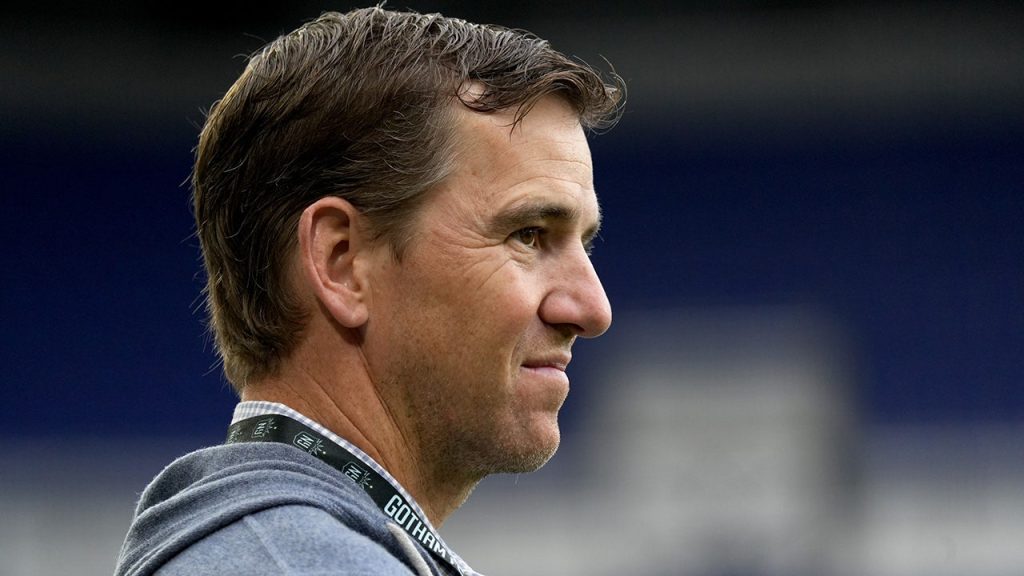Eli Manning’s recent revelation about his inaugural subway ride, 16 years after commencing his NFL career with the New York Giants, sparked a wave of amusement and disbelief among fans and commentators alike. The seemingly mundane act of utilizing public transport became a topic of conversation, particularly due to Manning’s long tenure in the New York metropolitan area. The ensuing discussion highlighted not only Manning’s personal transportation choices but also shed light on the restrictive nature of NFL contracts and the lengths teams go to protect their valuable assets from potential injury risks.
The revelation occurred during an episode of the “ManningCast,” a popular sports program co-hosted by Eli and his brother, Hall of Fame quarterback Peyton Manning. Peyton, known for his playful banter, teased Eli about his subway inexperience, expressing mock disappointment that someone who played for the New York Giants had never utilized the city’s iconic transit system. He questioned Eli’s claim of being a “man of the people,” implying that such a title necessitated familiarity with the daily experiences of ordinary New Yorkers, including navigating the subway.
Eli, in his defense, clarified that while he played for a team bearing the New York moniker, the Giants’ home stadium, MetLife Stadium, is actually located across state lines in New Jersey. He emphasized his New Jersey residency, arguing that his infrequent ventures into New York City lessened the necessity of subway travel. He further explained that his recent subway experience was driven by a practical need to traverse the city from uptown to downtown, portraying it as a utilitarian choice rather than a novelty.
However, the most intriguing aspect of Eli’s explanation revolved around the stipulations within his NFL contract. He asserted that the contract explicitly prohibited him from riding the subway, citing the potential risk of being “pushed in front of a train.” This statement illuminated the stringent measures NFL teams employ to safeguard their players from injuries outside of official game activities. These contractual clauses often extend beyond obvious high-risk pursuits to encompass seemingly innocuous everyday activities, reflecting the immense financial investment teams make in their players and the potential consequences of injuries impacting their performance and availability.
The case of former Buffalo Bills running back Nyheim Hines exemplifies the precarious nature of off-field activities for NFL players. Hines suffered a season-ending injury in a jet ski accident during the 2023 offseason, tearing his ACL and MCL. While the accident occurred outside of team-sanctioned activities, it nonetheless had significant repercussions for both the player and the team. Hines faced a lengthy rehabilitation process, while the Bills grappled with the loss of a key player and the contractual implications of his injury. While the Bills were initially relieved of their contractual obligations, they eventually reached an agreement with Hines before releasing him in March.
The Hines incident underscores the rationale behind the restrictive clauses in NFL contracts. Teams invest substantial resources in acquiring and retaining talented players, and injuries can significantly impact a team’s performance and financial stability. Contractual limitations on players’ off-field activities, while sometimes appearing excessive, are designed to mitigate the risk of preventable injuries and protect the team’s investment. These clauses typically encompass a wide range of activities, from extreme sports like rock climbing and skiing to seemingly less hazardous pursuits like playing basketball or, in Eli Manning’s case, riding the subway. The goal is to minimize exposure to potential injury risks and ensure that players remain healthy and available for official team activities.
The incident involving Hines and the contractual restrictions faced by Manning highlight the complexities of the relationship between NFL teams and their players. While players are handsomely compensated for their athletic abilities, their contracts often impose limitations on their personal freedom and activities outside of football. This delicate balance between player autonomy and team interests reflects the high-stakes nature of professional sports, where injuries can have far-reaching consequences. The story of Eli Manning’s belated subway ride serves as a lighthearted yet insightful glimpse into the often-unseen aspects of NFL contracts and the lengths teams go to protect their investments. It also underscores the inherent risks professional athletes face, even in seemingly mundane activities, and the ongoing negotiation between personal freedom and contractual obligations in the world of professional sports.

